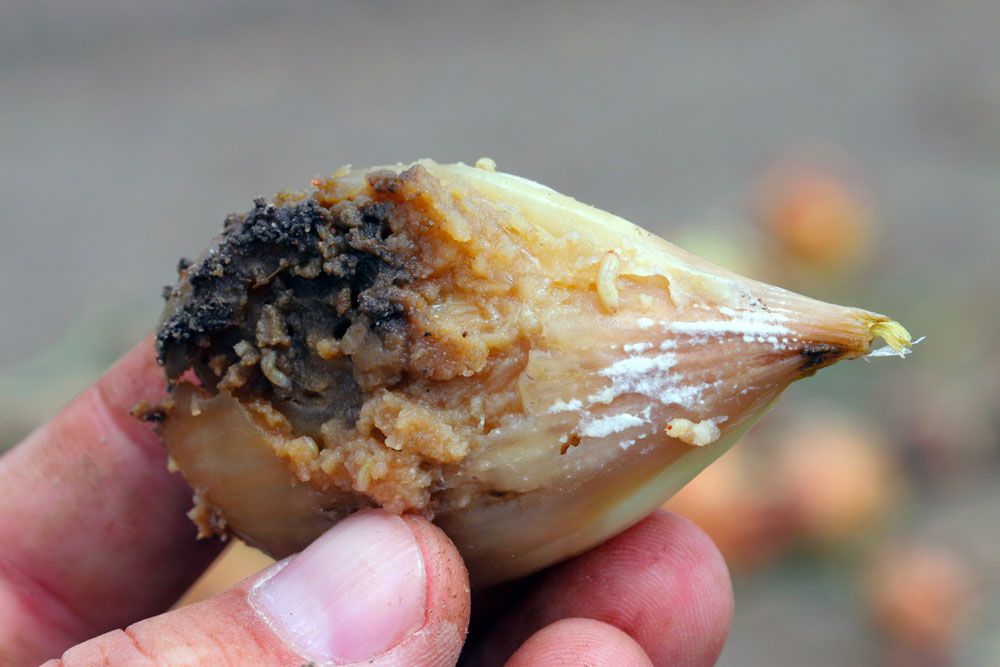
Onion Bulb Fly – Emerus strigatus
Onion Bulb Fly (Emerus strigatus)
Common Name: Onion Bulb Fly
Latin Name: Emerus strigatus
Appearance:
Onion flies are 5-7mm long and look like small grey house flies. The larvae are white, legless, headless maggots that can grow to be 10mm long. Maggots feed on the roots, rendering them inedible and killing seedlings.
Host plant:
Leeks, garlic, and decorative Alliums are examples of host plants.
Territory:
Throughout the world, but most typically seen in the United States
Damages caused by Onion Bulb Fly:
Onion fly-infested seedlings can be destroyed. The outer leaves of elderly plants might be yellow and wilt. As the larvae eat within the onion bulb, they might be killed. This bug is most common in central and eastern England and is most dangerous in June and July.
Life history and habits:
Adult onion flies emerge from overwintered pupae in May and lay eggs at the neck of new leaves or in the soil near host plants. The eggs hatch in a few days, and each female may lay up to 200 eggs. To finish development, the whitish, legless, and headless maggots can migrate from one plant to another via the soil. When completely developed, they reach a length of 10mm in about three weeks. In contrast to the allium leaf miner, which pupates within the leaves, they pupate in the soil. After two to three weeks, the following generation of flies emerges, and there can be three generations yearly.
